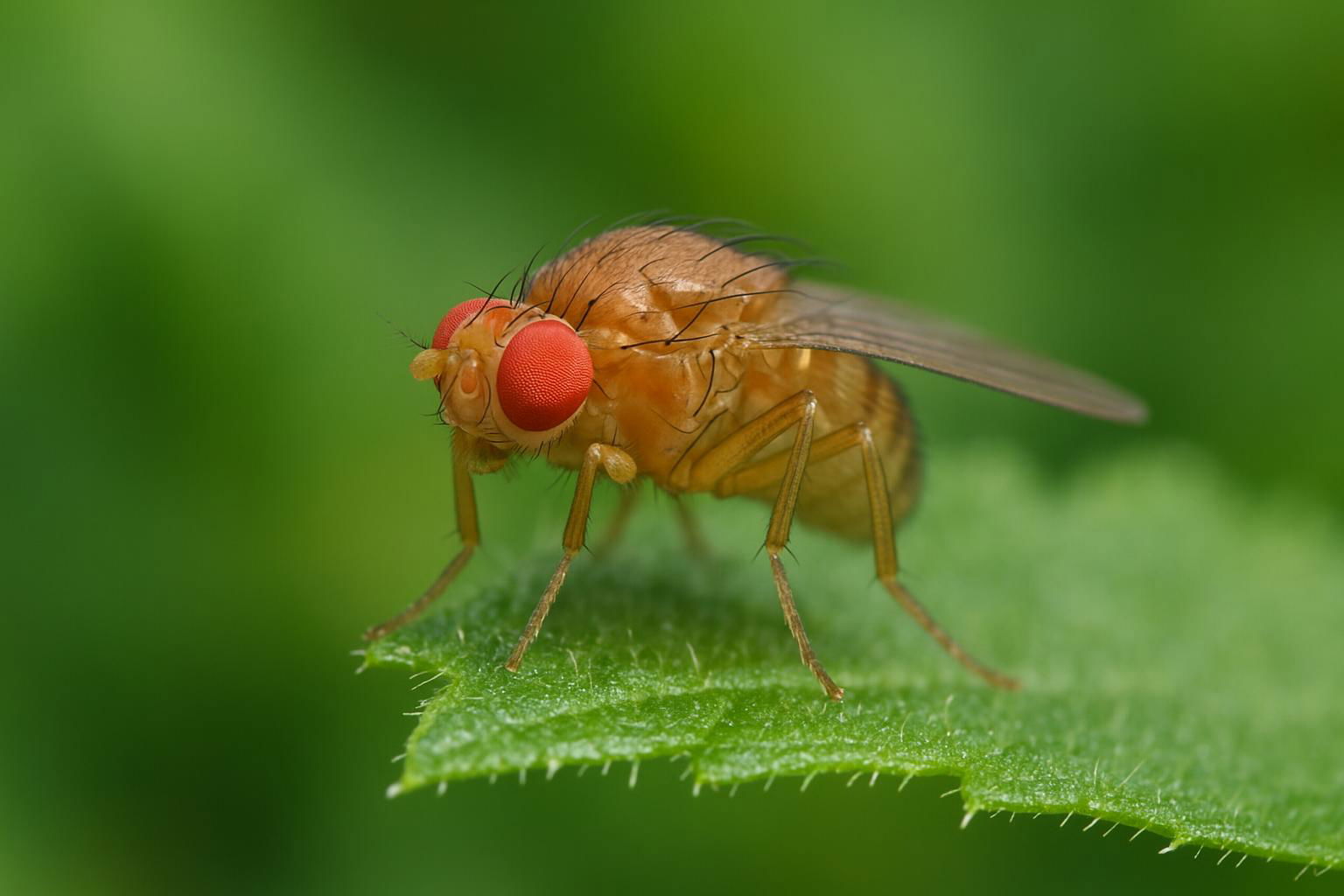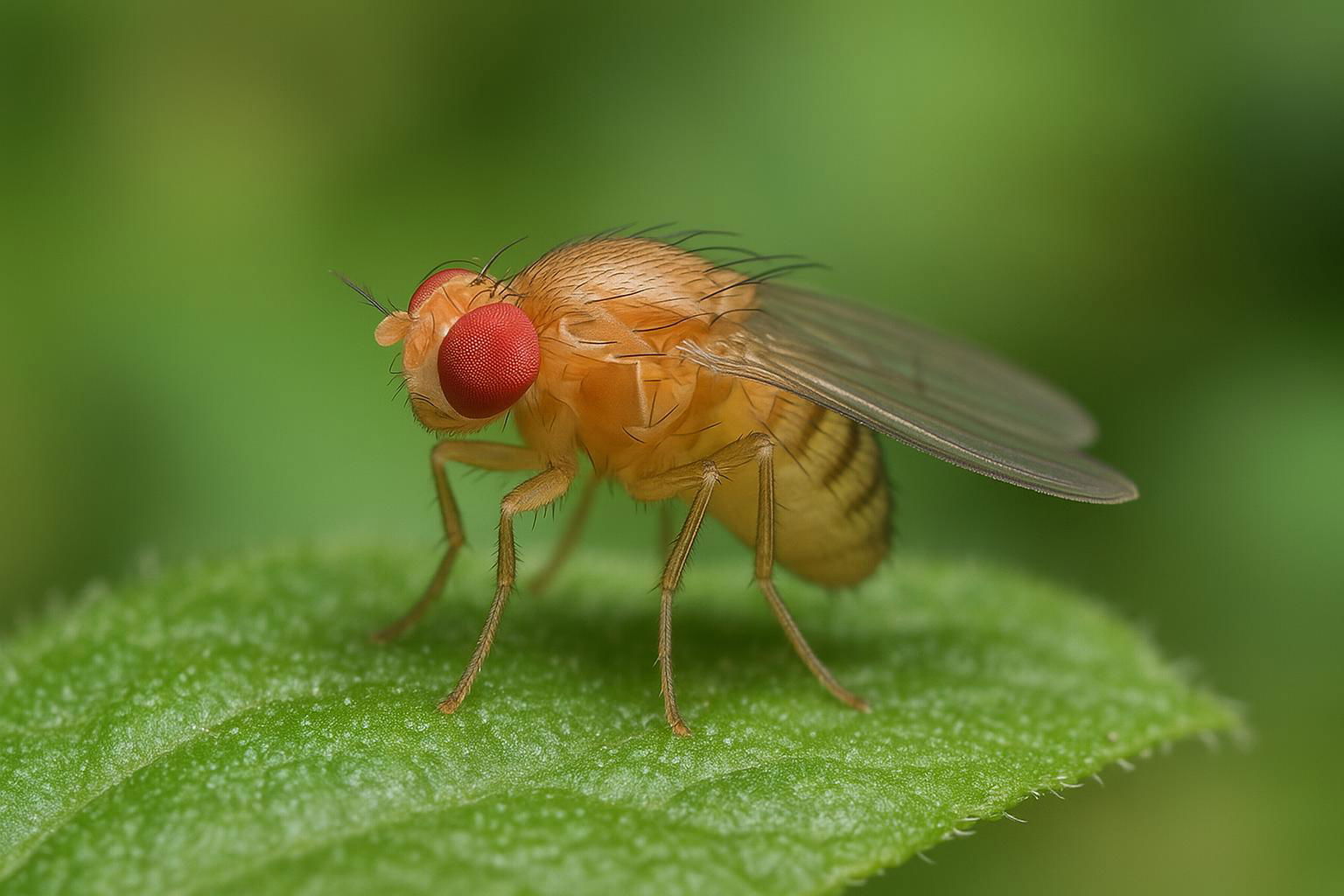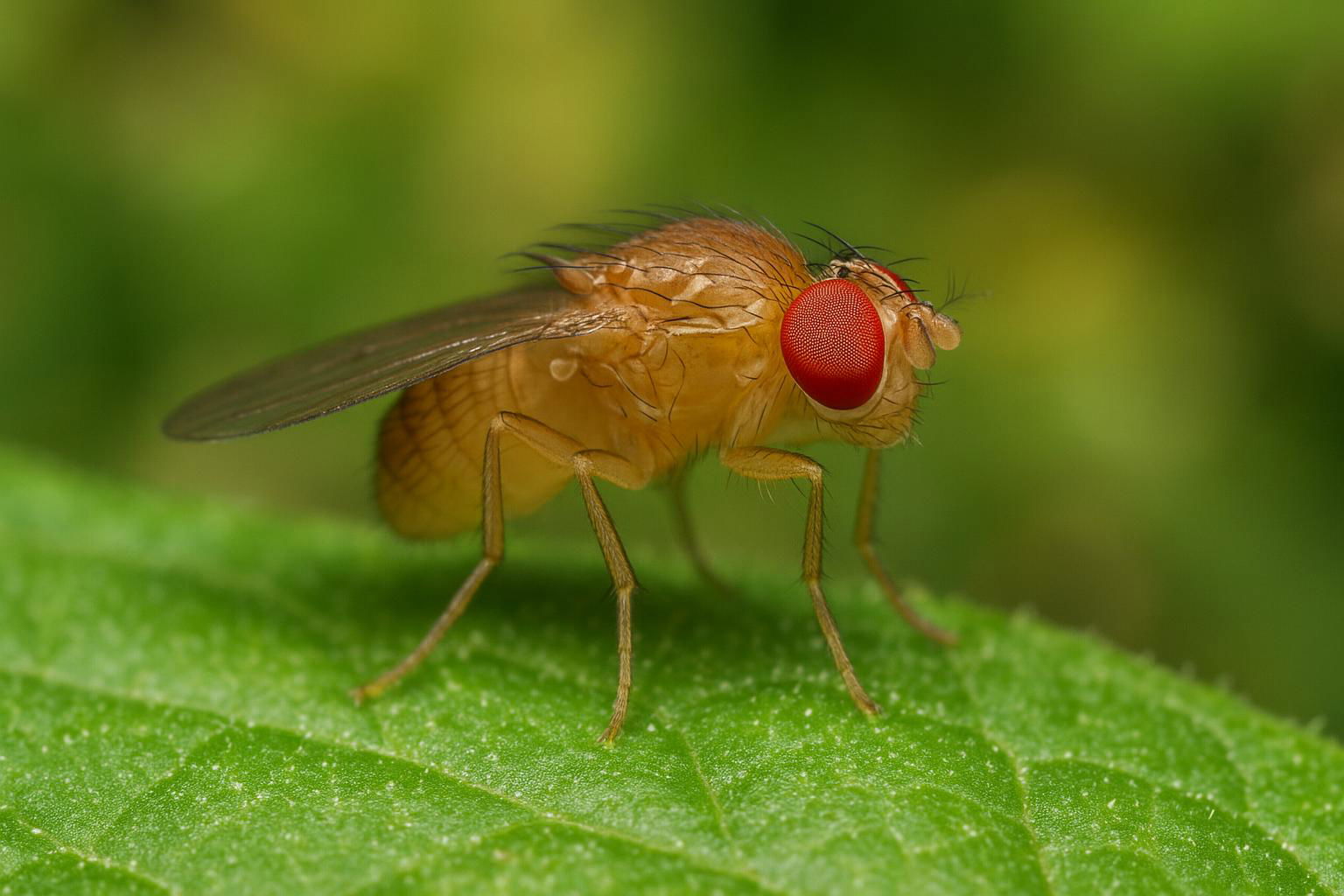
Laboratory Fruit Fly
Drosophila melanogaster
The Laboratory Fruit Fly, scientifically known as Drosophila melanogaster, is a small, hardy insect that has played a pivotal role in genetics and biological research. Measuring just 2-4 mm in length, this species is characterized by its distinctive red eyes, tan-colored body, and dark bands across the abdomen. Native to the tropics, Drosophila melanogaster can now be found worldwide, particularly around fermenting fruit where they breed prolifically.
Renowned for its short life cycle of about 10-12 days and high reproductive rate, it serves as an ideal model organism. Scientists favor this fruit fly due to its simple genetic structure, with only four pairs of chromosomes, yet it shares approximately 75% of the genes that cause disease in humans, making it invaluable for studying developmental biology, neurobiology, and evolutionary biology. Its complete genome was sequenced in 2000, further enhancing its research applications. Additionally, its transparent embryo allows for easy observation of developmental processes.
Despite its humble appearance, the Laboratory Fruit Fly has greatly contributed to our understanding of heredity, including landmark discoveries such as the principles of gene linkage and the role of chromosomes in inheritance. Its enduring impact continues to make it a cornerstone of genetic research and education.

 All Species & Breeds
All Species & Breeds
 Highland Cattle
Highland Cattle
 Miniature Donkeys
Miniature Donkeys
 All Species Directory
All Species Directory
 Highland Cattle in Virginia
Highland Cattle in Virginia
 Miniature Donkeys in Texas
Miniature Donkeys in Texas















